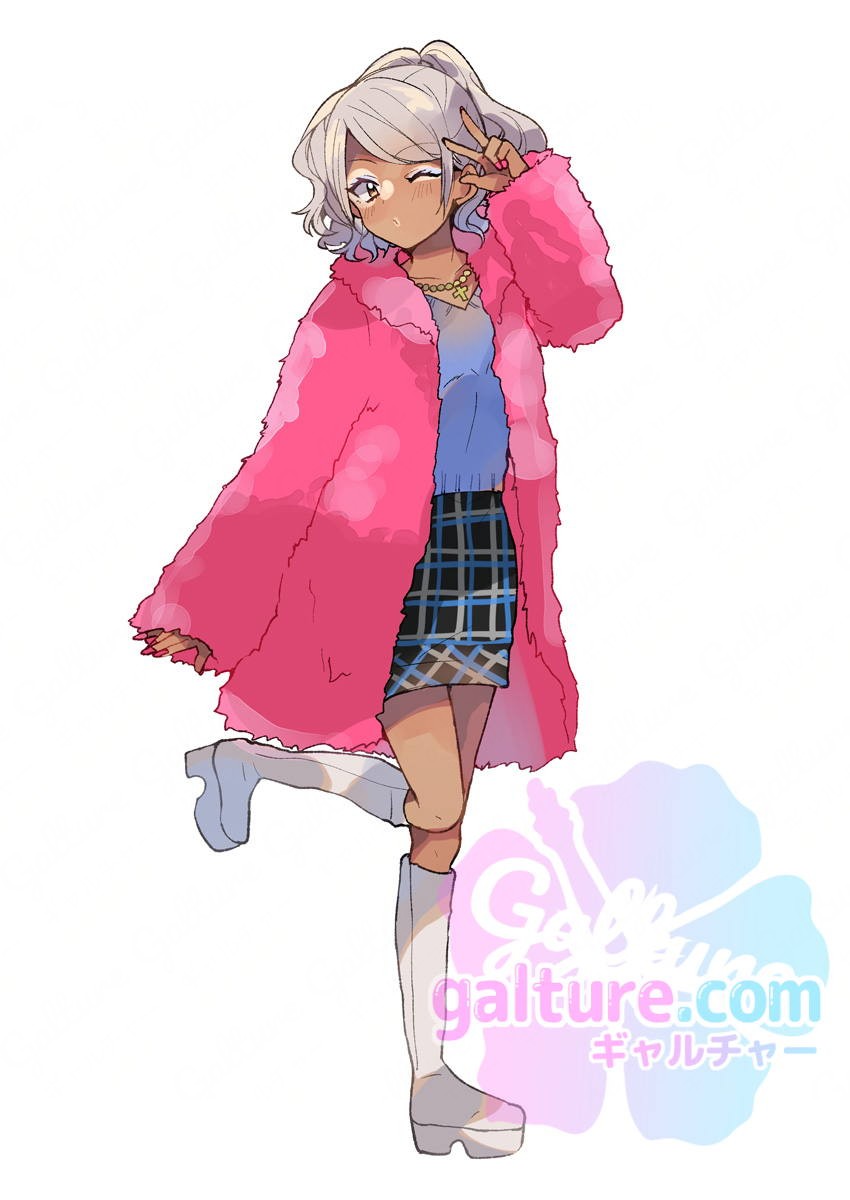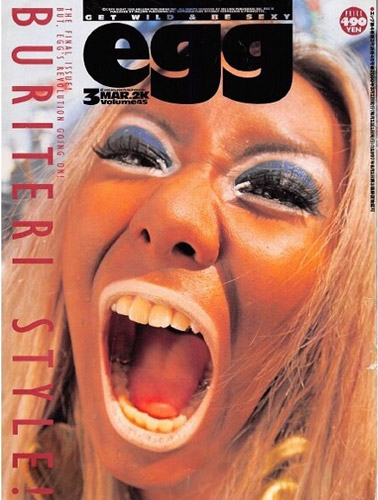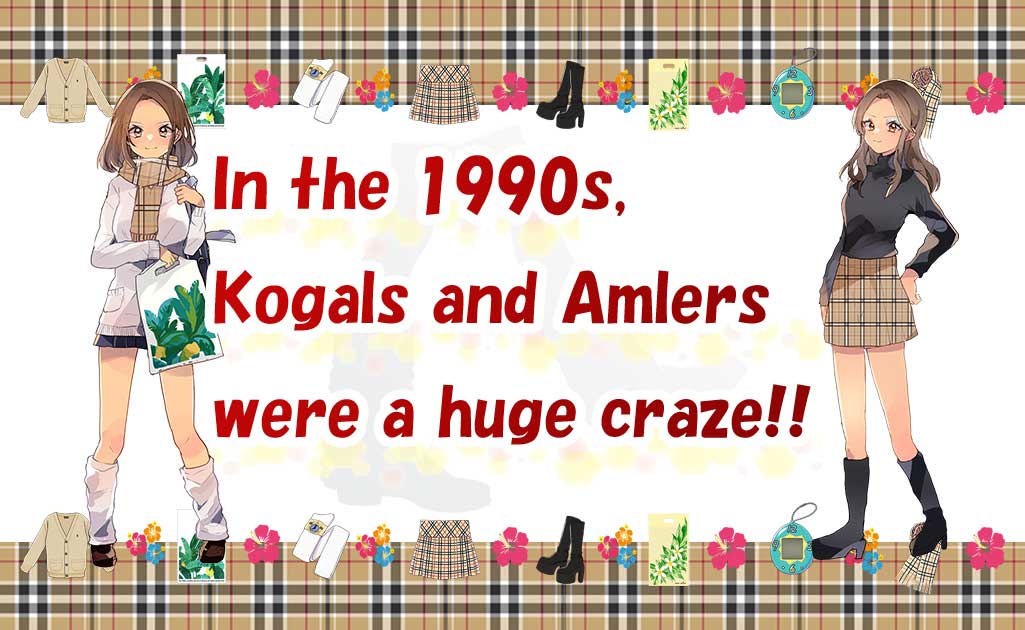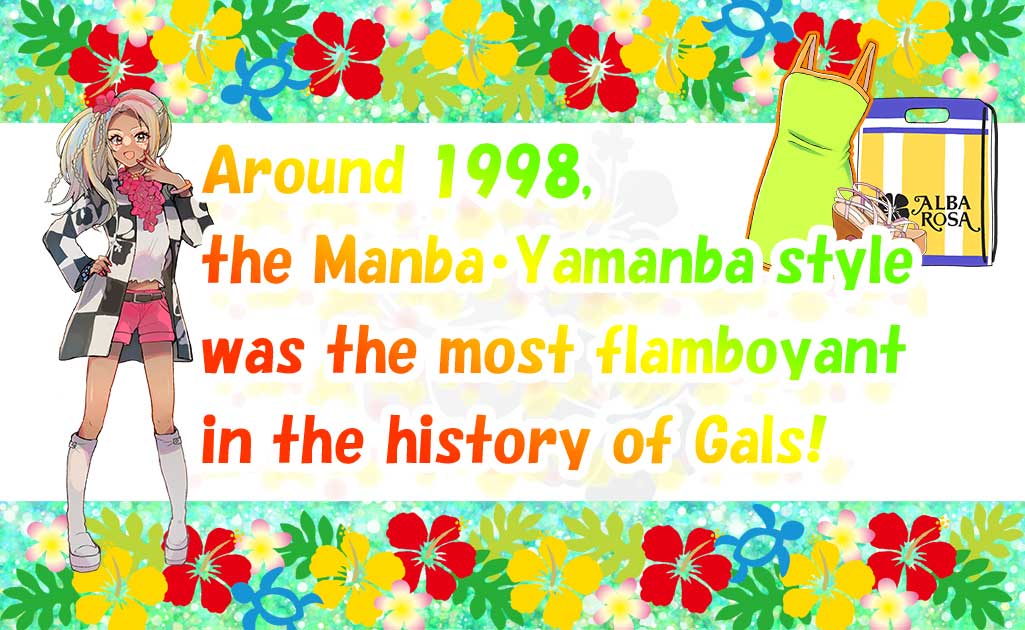This was a time when the motto was "The darker your skin, the better!" Therefore, many girls went to tanning salon.
The Ganguro・Gonguro Era of 1998! Gonguro three brothers and the Para Para The arrival of the Boom!

Ganguro and Gonguro, which evolved from Kogal, were Gals cultures that was all the rage in the late 1990s to early 2000s.
"What is Ganguro? What are Gonguro and Bachiguro?
Ganguro is a new style that evolved from Kogal, peaking in popularity around 1998 to the early 2000s as a part of gal fashion.
"Ganguro" comes from the meaning "to darken one's face by tanning" or "black face.", or a shortened form of "Gangan Kuroi" (extremely black) , The style was centered around girls who tanned to make their skin look darker, and there were many girls around Shibuya and Ikebukuro.
Gonguro refers to Gals who tan their skin even darker than typical Ganguro. Those who tanned to an even darker shade were called "Bachiguro."

Features of Ganguro
| Skin color | The skin is black (in three stages: Ganguro < Gonguro < Bachiguro). |
|---|---|
| Hairstyle | High-bleached hair colors like blonde or silver, with mesh. |
| Makeup |
|
| Fashion | Clothes with hibiscus patterns or bright, vivid colors. |
In summary, the Ganguro style can be described as having black skin and being "extremely flashy!"


"Among middle and high school Gals, brands like LOVEBOAT and mejane were very popular! ALBAROSA was a brand that many aspired to have. 😳"

Gonguro three brothers withU led the Gals boom!
During the heyday of Ganguro and Gonguro, the charismatic figures among the Gals were the "Gonguro three brothers withU."
The Gonguro three brothers withU refer to the group of four popular figures in the gal magazine 'egg' around 1998-2000, consisting of Buriteri-chan, Akokichi-chan, Fumikko-chan, and Yuuka-chan.
When they were featured in the August 1998 issue of "egg," they instantly became a hot topic!
Their extreme Gonguro Gal style was truly remarkable, making them charismatic icons among gals.
Many Gals reportedly read 'egg' just to see the Gonguro three brothers withU!
They had a somewhat more mature aura (?) compared to the Yamanba Gals who appeared later and are said to symbolize the peak of the gal era.
Among them, "Buriteri-chan" was especially popular, and the March 2000 issue of "egg" with her on the cover became the magazine's best-selling issue ever!!

egg' March 2000 Issue (Released on February 1, 2000)
Publisher: Taiyo Tosho
Cover: Buriteri
The state of Gals at the time
Gals loved to act in groups! Just like there were gal circles (gyaru-sa), Gals would always gather and act together.
What the Gals of those days would do when they got together
- Dance a lot of parapara.
- Sit on the ground and make noise.
- Taking Lots of Purikura.
- People Watching.
- Waiting to be picked up (Nanpa).
- Roast thoroughly in Tensaro.
Dance a lot of parapara ~Third Parapara boom~
From around 1999 to 2001, the "Third Para Para Boom" occurred!
There were many Para Para club events, and Gals and gal-o (male Gals) eagerly participated in them.
At that time, every gal could dance to songs like "Night of Fire" and the Para Para version of "Mickey Mouse March." They danced Parapara all the time, not only in clubs, but also at school, around town, and even at home.
Sitting on the Ground and Making Noise
Ganguro and Gonguro Gals loved to sit on the ground and make noise with their friends!
Those sitting on the ground were called "Zibetalian."
Taking Lots of Purikura

It was normal for him to take at least one Purikura photo every day with the friends he met almost every day.
Even Gals from schools with strict school rules transform into full-fledged Gal styles for photo shoots by shortening their skirts, wearing baggy loose socks, and oversized Ralph Lauren() sweaters.
.Purikura, short for "Print Club" in Japanese, refers to a special type of photo booth that originated in Japan. These booths allow users to take photos, customize the images with various decorations, and then print them out as stickers.
.Ralph Lauren, with its trademark pony logo, is a fashion brand also known as 'POLO.' In the 90s, it was popular among high school girls, especially for cardigans.
The 'Street Snap' Purikura machine, popular at the time, was very popular because it allowed for full-body Purikura, something new at that time!

People Watching
Gals at the time also loved people watching!
Even though they didn't surf themselves, they would observe the gal-o (Male Gals) around them and comment things like, "That guy is an Okasurfer ()" and have fun with their gal friends by making such casual remarks.
.Okasurfer... refers to someone who doesn't surf but dresses like a surfer. It's a term often used with a negative connotation.
Waiting to be Picked Up (Nanpa)
In those days, the most common way for Gals to meet the opposite sex was overwhelmingly through being picked up (nanpa).
In Shibuya, Gals would gather in Center Gai or clubs, while Kogals in Kansai were often found at Shinsaibashi's Ebisubashi (nicknamed the 'Pick-up Bridge' or 'Nanpa Bridge'), occasionally in Triangle Park in Amerikamura () or in front of HEP FIVE () and Loft in Umeda, gathered there and made a lot of noise, waiting to be picked up(Nanpa).
.Amerikamura…Officially known as "America Village." It's an area in Osaka City, Osaka Prefecture, lined with youth-oriented apparel shops and is considered a hub of youth culture in Osaka.
.HEP FIVE in Umeda…A complex commercial facility in Umeda, Osaka Prefecture.As it housed many shops of the 109 brand, it was a popular shopping destination for Kansai Gals.
Roast thoroughly in Tensaro
"In summer, Gals would flock to Tensaro (natural tanning salon) to tan their skin!
Especially "the beach" was the best spot!
There were many gals who applied plenty of tanning oil all over their bodies and tanned their skin on the beach, waiting to be picked up.
That was the Gals' way of spending the summer.
Even though the Gals back then often waited to be picked up(Nanpa), it was more important for them to gather with other Gals and get excited about Gal talk. ✨

For the Ganguro and Gonguro generation, it was all about being incredibly black-skinned.
The peak period when there were so many Gals with such black skin was the late 1990s to the early 2000s.
It was a given that Gals = black skin, but when Ayumi Hamasaki appeared as "the second charismatic figure of the Gals," the trend shifted from Ganguro to pale-skinned Gals, significantly reducing the proportion of black-skinned Gals.

